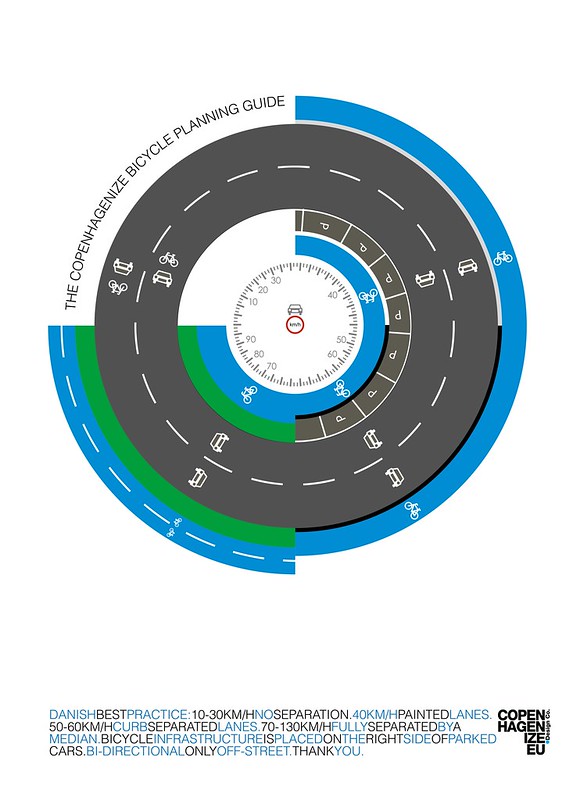Well, maybe not everywhere...
I've been working on this post for a while now. It started when I tweeted a link to a video explaining "Protected Intersections for Cyclists"A novel (well not really, more on that in a bit) way of dealing with one of the most common complaints against Cycle Tracks in North America: What about the intersections?
Quickly, while there are subtle variations, Bike Lanes merge with traffic prior to intersections & Cycle tracks continue to the intersection to the right of cars and stop. Both these strategies invite conflict with other traffic at right turns, red-lights and have short comings for left-turning cyclists. Here, clearly demonstrated, is a solution. Best part, this is not a theoretical solution. This is widely used, in the Netherlands of course. Why reinvent when others have already done all the hard work.
The reactions: "It can't be done in Ottawa, takes to much room."
"We shouldn't do this because then everyone will think that is the only place we can ride."
The room issue is complicated, but ultimately false: Issue is never is there enough just how do you choose to use it. As Easy As Riding A Bike frequently takes this on in a British context. It is the second complaint that I've been trying to get a handle on. There are two sides to this: from cyclists perspective, a fear that Cycle Tracks will inevitably lead to a loss of right to the road. Non cyclists are often exasperated thinking we want CYCLE LANES EVERYWHERE!
I can't completely allay cyclists fears that ultimately they will be denied road space. In large part because, now without extensive, safe or comprehensive cycling infrastructure. It is very common for a cyclist to be aggressively harassed by drivers who question their right to the road, occasionally with fatal results. So, unfortunately this is a reasonable fear, especially for established cyclists who successfully brave the current environment. What I can do is address the "Cycle Lanes Everywhere" fear. After all if cycle lanes aren't meant to be everywhere cyclists can't be restricted to them. Further, if cycling infrastructure has a clear plan places where it makes sense, and places where it doesn't maybe opposition to proper, comprehensive and safe infrastructure will diminish. Well one can hope. How to go about setting up the matrix? Well Kay Teschke Professor, School of Population and Public Health The University of British Columbia. Has done some great research on Cycling in Cities, showing relative dangers to and preferences of cyclists of all types. I really support this research it is very interesting and necessary in the North American context. But, why reinvent something someone else has done? This time form Denmark and the fine people at Copenhagenize have a perfect tool for planers and advocates:
It is so elegant, so simple. Different provisions based on traffic speed and volume. Quiet low traffic streets, neighbourhood residential streets for instance cyclists of all ages should be able to share reasonably safely. Faster or higher volume roads get progressively more comprehensive infrastructure. Simple, no?


